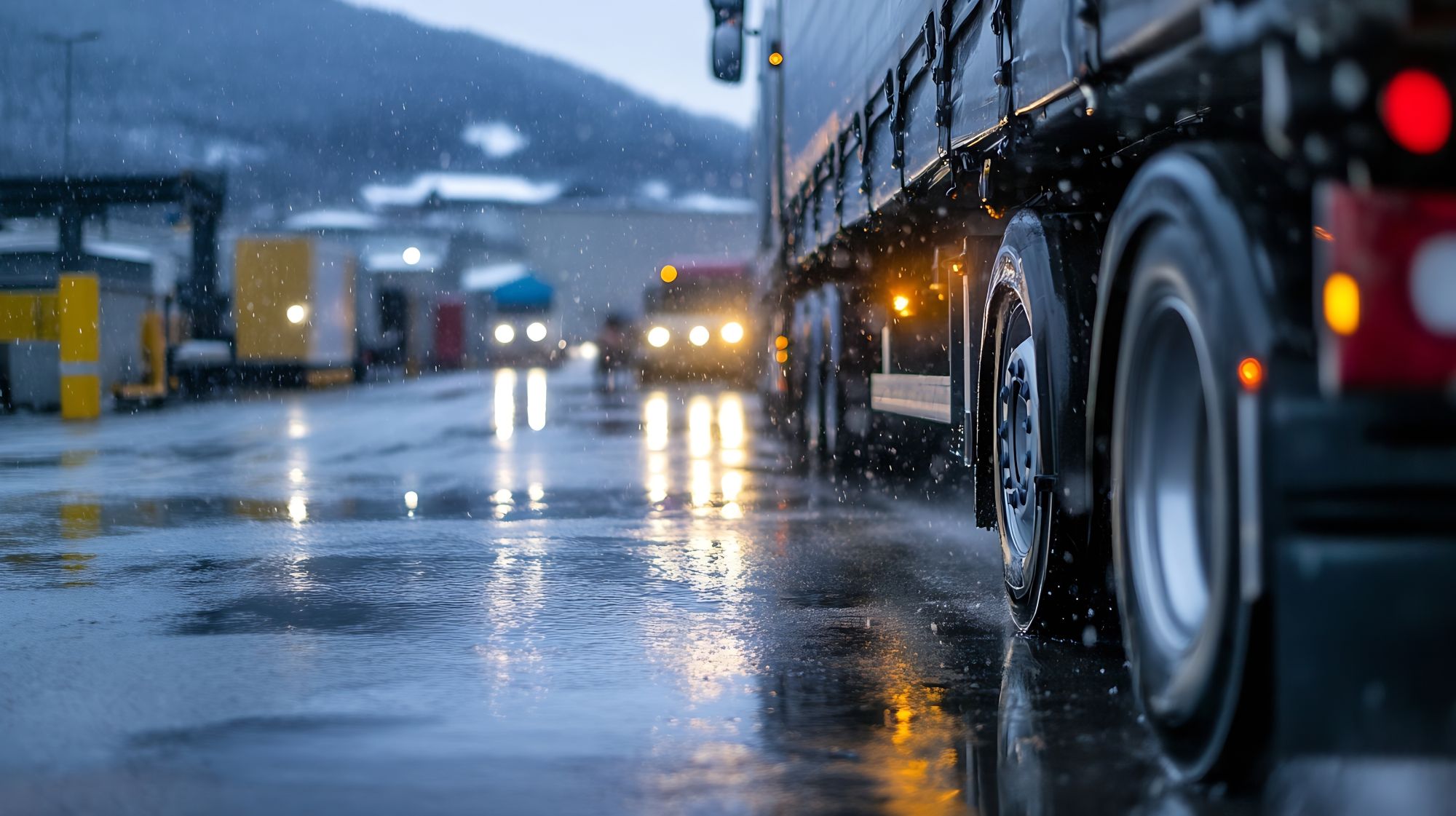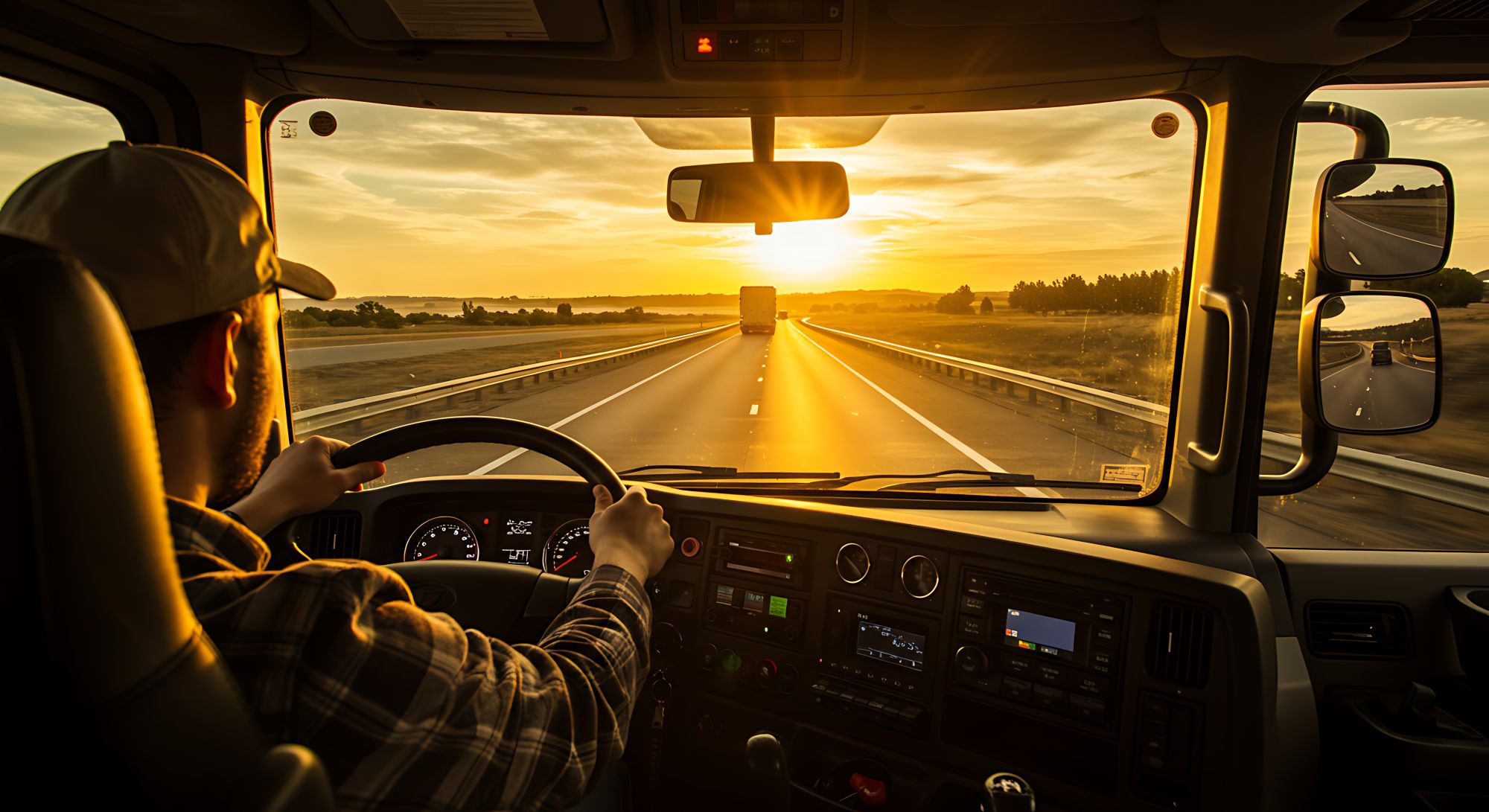
Guest
Как изменение климата влияет на сектор мобильности
Создано: 21.07.2025
•
Обновлено: 21.07.2025
Изменение климата больше не является далеким риском. Для тех, кто работает в сфере автомобильных перевозок, это ежедневная операционная реальность, которую с каждым годом становится все труднее игнорировать. От жары, которая плавит асфальт, до наводнений, которые перекрывают основные маршруты, - влияние меняющегося климата заложено в бизнесе по перевозке грузов.
Для менеджеров автопарков это означает необходимость ориентироваться в меняющихся правилах, обновлять инфраструктуру и переосмысливать планирование непрерывной работы. Для водителей это означает адаптацию к новым рискам на дороге - от прокола шин до срыва сроков доставки. А для всего сектора это сигнализирует о необходимости более устойчивого, учитывающего климат подхода к мобильности.
Погодные перебои представляют собой оперативную угрозу
В июле 2022 года в Великобритании был зафиксирован самый жаркий день в истории. Когда температура поднялась до 40℃, дороги начали размягчаться, а участки A14 были закрыты из-за ухудшения качества покрытия. Операторы автопарков были вынуждены изменять маршруты доставки, иногда в кратчайшие сроки, в то время как температура двигателей повышалась, и транспортные средства с трудом справлялись со своей задачей.
В том же году сильные ветры, вызванные штормом "Юнис" (https://www.theguardian.com/world/2022/feb/18/flights-and-trains-cancelled-as-storm-eunice-hits-europe), нанесли огромный ущерб грузовым коридорам в Западной Европе, опрокинув высокобортные автомобили и повредив чувствительные к температуре грузы. Тем временем в январе 2024 года шторм "Хенк" затопил обширные территории в центральной Англии. Ключевые трассы в Мидлендсе были непроходимы, и некоторые водители часами простаивали в пробках.
Это не единичные случаи. Это признаки того, что транспортная система становится все более уязвимой к климатическим угрозам. Дорожное покрытие, компоненты транспортных средств и логистические сети подвергаются испытаниям меняющимися условиями, и последствия этого ощущаются во всей цепочке поставок.
Нарушенные цепочки поставок
Когда речь идет о климатических сбоях, их последствия ощущаются не только на отдельных маршрутах. Пострадали целые цепочки поставок - иногда без предупреждения. В Нидерландах повышение уровня моря и обильные осадки заставляют власти и компании пересмотреть устойчивость важнейших объектов логистической инфраструктуры, особенно в низколежащих промышленных районах.
Роттердамский порт - крупнейший морской порт Европы - предпринял активные шаги для адаптации к климатическим рискам, укрепив причальные стенки, подняв подъездные пути и модернизировав системы ливневой канализации для защиты от наводнений. Внутренние логистические центры также находятся под пристальным вниманием, поскольку экстремальные погодные условия выявили уязвимые места в подъездных путях и дренажных системах.
Инновации на транспорте
Технологии автопарка быстро совершенствуются, особенно когда речь идет об электрификации и интеллектуальной диагностике. Однако изменение климата создает новые проблемы даже для самых современных транспортных средств. В холодную погоду эффективность аккумуляторов может снизиться на 20 %, что сокращает эффективный запас хода электрических фургонов. Между тем, высокие температуры ускоряют деградацию шин и создают дополнительную нагрузку на системы охлаждения автомобиля.
Чтобы решить эти проблемы, некоторые операторы инвестируют в системы прогнозируемого технического обслуживания, которые используют телематику для прогнозирования износа и планирования ремонта до возникновения дорогостоящих поломок. Другие модернизируют системы комфорта в кабине, чтобы защитить самочувствие водителя в периоды сильной жары или холода. Хотя эти изменения требуют предварительных инвестиций, они могут принести дивиденды в виде увеличения времени работы, безопасности и удержания водителей.
Растущий климатический риск меняет и страхование. Некоторые страховщики реагируют на участившиеся претензии в связи с экстремальными погодными условиями повышением премий и ужесточением исключений. В частности, полисы страхования от перерыва в производстве подвергаются более тщательному изучению, особенно в тех случаях, когда цепочки поставок подвержены повторному нарушению. И хотя страхование грузов остается актуальным, не все полисы автоматически покрывают задержки, вызванные такими климатическими явлениями, как наводнение или сильный ветер.
Руководители автопарков должны пересмотреть свое страховое покрытие в свете этих возникающих рисков. Это означает, что необходимо проверить наличие исключений, оценить, как определяются события, связанные с климатом, и убедиться, что критические пробелы - например, время простоя из-за закрытия дорог - адекватно учтены. В некоторых случаях демонстрация проактивного подхода к управлению рисками, снижению последствий наводнений и обучению водителей также может помочь добиться более выгодных условий.

Нормативно-правовая база
В то время как физические последствия изменения климата уже заметны, изменения в нормативно-правовой базе создают еще один уровень сложности для операторов. Зоны с низким уровнем выбросов быстро расширяются по всей Великобритании и Европе, предъявляя новые требования к составу автопарка и соблюдению норм. В Лондоне продолжает расширяться зона сверхнизких выбросов (ULEZ), а такие города, как Бирмингем и Оксфорд, ввели свои собственные варианты.
На европейском уровне пакеты [Green Deal] (https://transport.ec.europa.eu/news-events/news/green-deal-greening-freight-more-economic-gain-less-environmental-impact-2023-07-11en#:~:text=The%20uptake%20of%20more%20aerodynamic,cube%20containers%20by%20standard%20vehicles.) и [Fit for 55] (https://commission.europa.eu/strategy-and-policy/priorities-2019-2024/european-green-deal/delivering-european-green-deal/fit-55-delivering-proposalsen#:~:text=Under%20the%20European%20Climate%20Law,cost%2Deffective%20and%20competitive%20way.) установили амбициозные цели по декарбонизации. Операторов автопарков стимулируют - и все чаще требуют - переходить на более чистые виды топлива и технологии. От мандатов на электрификацию до правил прозрачности цепочек поставок - операторы теперь сталкиваются с новой базовой точкой зрения на то, что считается приемлемой деловой практикой.
Для тех, кто управляет автопарками, эти изменения представляют собой как логистическую проблему, так и стратегическую возможность. Принятие принципов устойчивого развития - это не только избежание штрафов, но и защита операций на будущее и опережение меняющихся ожиданий клиентов.
Создание устойчивых операций
Адаптация не происходит в одночасье, но постепенные изменения могут оказать существенное влияние. Некоторые операторы уже проводят оценку климатических рисков для своего автопарка, выявляя активы и маршруты, наиболее уязвимые для сбоев. Другие предлагают водителям обновленную подготовку, чтобы повысить безопасность и улучшить процесс принятия решений во время экстремальных погодных явлений.
Выбор топлива тоже меняется. Грузоперевозчики, ищущие альтернативы с меньшим выбросом углекислого газа, обращаются к HVO - гидроочищенному растительному маслу - альтернативе дизельному топливу, которая сокращает выбросы, не требуя новой инфраструктуры. В то же время те, кто инвестирует в программное обеспечение для оптимизации нагрузки, видят преимущества не только в экономии топлива, но и в сокращении выбросов, что способствует достижению целей соответствия нормативным требованиям.
Уже нет никаких сомнений в том, что изменение климата определяет будущее автомобильного транспорта, причем не через десятилетия, а прямо сейчас. Задача операторов - перейти от реактивного мышления к более стратегическому, долгосрочному. Это означает понимание рисков, своевременное принятие мер и признание того, что устойчивость быстро становится источником конкурентного преимущества.
"Мы слышим одно и то же от операторов автопарков по всей Великобритании и Европе", - говорит Ник Рентон, руководитель европейского отдела стратегии и развития бизнеса SNAP. "Климатическая катастрофа - это не будущий риск, она уже наступила и влияет на все - от складирования и планирования маршрутов до благосостояния водителей. Процветать будут те автопарки, которые относятся к климатической устойчивости как к бизнес-стратегии, а не просто как к экстренной реакции".
"Это важно, потому что цена бездействия растет - не только в финансовом плане, но и с точки зрения пропущенных поставок, простоев в работе и благополучия водителей на дорогах. Если мы хотим, чтобы товары продолжали перевозиться, а бизнес развивался, мы должны начать создавать эту устойчивость уже сейчас".
Компания SNAP тесно сотрудничает с автопарками по всей Великобритании и Европе, помогая им ориентироваться в новой реальности. Будь то с помощью знаний, партнерских отношений или более интеллектуальных инструментов для работы на дороге, мы готовы поддержать тех, кто заставляет колеса вращаться - независимо от погоды. [Зарегистрируйтесь сегодня] (https://snapacc.com/sign-up/), чтобы воспользоваться преимуществами наших решений по управлению автопарком.



